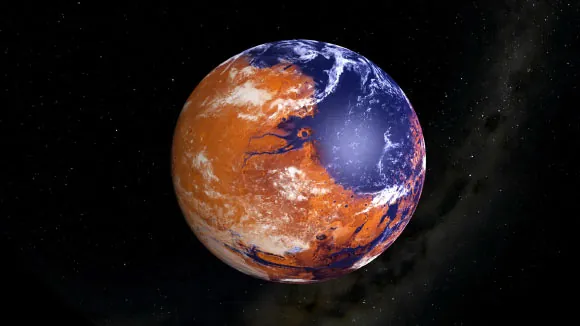
Astonishing Discovery: Ancient Carbonate Minerals on Mars Reveal Secrets of a Harsh Climate!
2024-10-08
Author: John Tan
Introduction
Scientists have made a groundbreaking revelation about the ancient climate of Mars, courtesy of carbonate minerals discovered by NASA’s Curiosity rover in Gale Crater. This research is pivotal for understanding the history of liquid water on the Red Planet, which has profound implications for the possibility of life beyond Earth.
Significance of Carbonate Minerals
Carbonate minerals are particularly intriguing to planetary scientists because they play a vital role in the carbon and water cycles. These cycles are essential elements in assessing a planet's habitability. By analyzing carbon and oxygen isotope measurements from the carbonates, researchers have uncovered invaluable insights into Martian environmental conditions.
Isotope Analysis
Isotopes are variants of elements that differ in mass. On Mars, scientists found that as water evaporated, lighter isotopes of carbon and oxygen escaped into the atmosphere, leaving heavier isotopes behind. This led to their accumulation in carbonate rocks, serving as a historical record of the planet's climate.
Expert Opinions
Dr. David Burtt, a prominent researcher at NASA's Goddard Space Flight Center, stated, “The isotope values of these carbonates indicate extreme evaporation, signifying that these minerals most likely formed in a climate suitable for only transient liquid water.” While the presence of these carbonates doesn’t directly support the idea of surface life on Mars, it does open the door to the possibility that life may have existed underground or prior to carbonate formation.
Formation Scenarios
The research team proposed two intriguing scenarios for the formation of these carbonates within Gale Crater. The first hypothesis suggests that they formed through cycles of wet and dry periods, implying alternating conditions that may have ranged from habitable to uninhabitable. The second scenario posits that these carbonates originated from highly saline water in frigid, ice-forming conditions.
Implications of Findings
Dr. Jennifer Stern, also from NASA, elaborated on the implications of these scenarios: “Wet-dry cycles suggest environments that fluctuate between habitability, whereas extremely cold conditions imply most water is frozen and largely unavailable for potential biochemical processes.”
Conclusion
What sets this study apart is its provision of isotopic evidence that backs previously proposed climate scenarios for ancient Mars, based on mineral presence and global modeling. The findings reveal that the heavy isotope values in Martian carbonates are markedly higher than those found in similar minerals on Earth, making them the most extreme isotope readings documented for any Martian material.
This richness in heavy isotopes highlights two significant findings: an extraordinarily high degree of evaporation of water in the past, and that accompanying processes allowing lighter isotope formation must have been considerably limited.
The team’s paper, published in the Proceedings of the National Academy of Sciences, adds a crucial layer to our understanding of Mars' climatic history. With continued exploration and analysis, scientists are inching closer to deciphering whether historical conditions on the planet may have ever supported life. The revelations from Gale Crater continue to ignite our curiosity and raise bold questions about the nature of our planetary neighbor.
Stay tuned as we unveil more incredible discoveries from Mars!






 Brasil (PT)
Brasil (PT)
 Canada (EN)
Canada (EN)
 Chile (ES)
Chile (ES)
 España (ES)
España (ES)
 France (FR)
France (FR)
 Hong Kong (EN)
Hong Kong (EN)
 Italia (IT)
Italia (IT)
 日本 (JA)
日本 (JA)
 Magyarország (HU)
Magyarország (HU)
 Norge (NO)
Norge (NO)
 Polska (PL)
Polska (PL)
 Schweiz (DE)
Schweiz (DE)
 Singapore (EN)
Singapore (EN)
 Sverige (SV)
Sverige (SV)
 Suomi (FI)
Suomi (FI)
 Türkiye (TR)
Türkiye (TR)